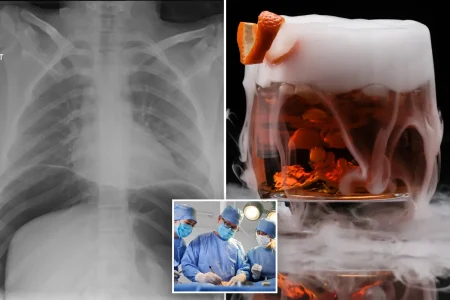The Rise of Alternative Meats: Navigating the Path to Mainstream Acceptance
The global food system is undergoing a significant transformation, driven by growing concerns about the environmental impact of traditional animal agriculture, ethical considerations regarding animal welfare, and the increasing demand for sustainable protein sources. At the forefront of this shift are alternative meats, encompassing plant-based options, cultivated meats (grown from animal cells), and even insect-based products. These innovative alternatives offer the potential to revolutionize our diets and address critical challenges facing our planet. While the sector has experienced remarkable growth in recent years, widespread adoption still faces several hurdles, from consumer perceptions and price parity to regulatory frameworks and scaling production. This article delves into the current trends shaping the alternative meat landscape and explores the key strategies being employed to overcome these adoption challenges and unlock the full potential of this transformative industry.
One of the most prominent trends driving the alternative meat market is the increasing sophistication of plant-based products. Moving beyond basic veggie burgers, companies are now developing complex formulations that mimic the taste, texture, and even nutritional profile of conventional meat with remarkable accuracy. Utilizing ingredients like soy, pea protein, wheat gluten, and mycoprotein, these products are designed to appeal not only to vegetarians and vegans but also to flexitarians and meat-reducers seeking to incorporate more sustainable options into their diets. Advances in food science and technology have enabled the creation of plant-based alternatives that replicate the fibrous texture of chicken, the juicy bite of a burger, and even the delicate flakiness of fish. This focus on sensory appeal is crucial for attracting mainstream consumers and normalizing the consumption of alternative proteins. Furthermore, manufacturers are increasingly incorporating functional ingredients and fortifying their products with essential nutrients like iron, vitamin B12, and omega-3 fatty acids, further enhancing their nutritional value and addressing concerns about potential deficiencies associated with plant-based diets.
Cultivated meat, also known as cell-based or lab-grown meat, represents another exciting frontier in the alternative protein space. This technology involves growing animal cells in a controlled laboratory environment, eliminating the need to raise and slaughter animals. While still in its early stages of commercialization, cultivated meat has the potential to offer a truly sustainable and ethical alternative to conventional meat production, addressing concerns about animal welfare, antibiotic resistance, and greenhouse gas emissions. Several companies are making significant strides in this area, developing prototypes of cultivated chicken, beef, pork, and seafood. Overcoming the challenges of scaling production and reducing costs are critical for making cultivated meat accessible to the wider public. Furthermore, establishing clear regulatory frameworks and addressing consumer perceptions regarding the safety and "naturalness" of cultivated meat will be essential for its successful integration into the food system.
Beyond plant-based and cultivated options, insect-based proteins are gaining traction as a sustainable and nutritious alternative. Insects, such as crickets and mealworms, are highly efficient at converting feed into protein and require significantly less land, water, and energy than traditional livestock. While insect consumption may face cultural barriers in some regions, the nutritional benefits and environmental advantages of insect-based protein are attracting increasing attention from food manufacturers and investors. Insects can be incorporated into a variety of food products, from protein bars and snacks to pasta and even meat alternatives, offering a versatile and sustainable protein source. Educating consumers about the nutritional value and environmental benefits of insect-based protein and developing palatable and appealing products will be crucial for overcoming cultural resistance and driving wider acceptance.
Addressing the challenges hindering widespread adoption of alternative meats requires a multi-faceted approach. One key strategy involves promoting consumer awareness and education. Many consumers still lack a clear understanding of the environmental and health benefits associated with alternative proteins. Targeted marketing campaigns, educational initiatives, and collaborations with chefs and food influencers can help dispel misconceptions and highlight the positive attributes of these products. Furthermore, making alternative meats readily accessible and affordable is crucial for driving adoption. Expanding distribution channels, achieving price parity with conventional meat, and offering a wider variety of product formats and flavors will make these alternatives more appealing and accessible to a broader consumer base. Government support through subsidies, research funding, and favorable regulatory frameworks can also play a significant role in accelerating the growth of the alternative meat industry.
Collaboration across the entire value chain is essential for overcoming the technical and logistical challenges associated with producing and distributing alternative meats. Partnerships between food companies, ingredient suppliers, research institutions, and technology providers can foster innovation, accelerate product development, and optimize production processes. For example, collaborations with flavor houses and texture experts are crucial for creating plant-based products that closely mimic the sensory experience of conventional meat. Similarly, partnerships with agricultural producers can ensure a sustainable supply of raw materials for plant-based alternatives. Joint ventures between cultivated meat companies and established food manufacturers can leverage existing infrastructure and distribution networks to bring these innovative products to market more efficiently.
The future of food is undeniably intertwined with the continued development and adoption of alternative meats. As technology advances and consumer demand for sustainable and ethical protein sources grows, the alternative meat sector is poised for exponential growth. By addressing the challenges of consumer perception, price parity, scalability, and regulatory frameworks through strategic collaborations, targeted marketing, and ongoing innovation, the industry can unlock its full potential and transform the global food system. This evolution promises a more sustainable, ethical, and resilient food future, one that benefits both human health and the health of our planet.












